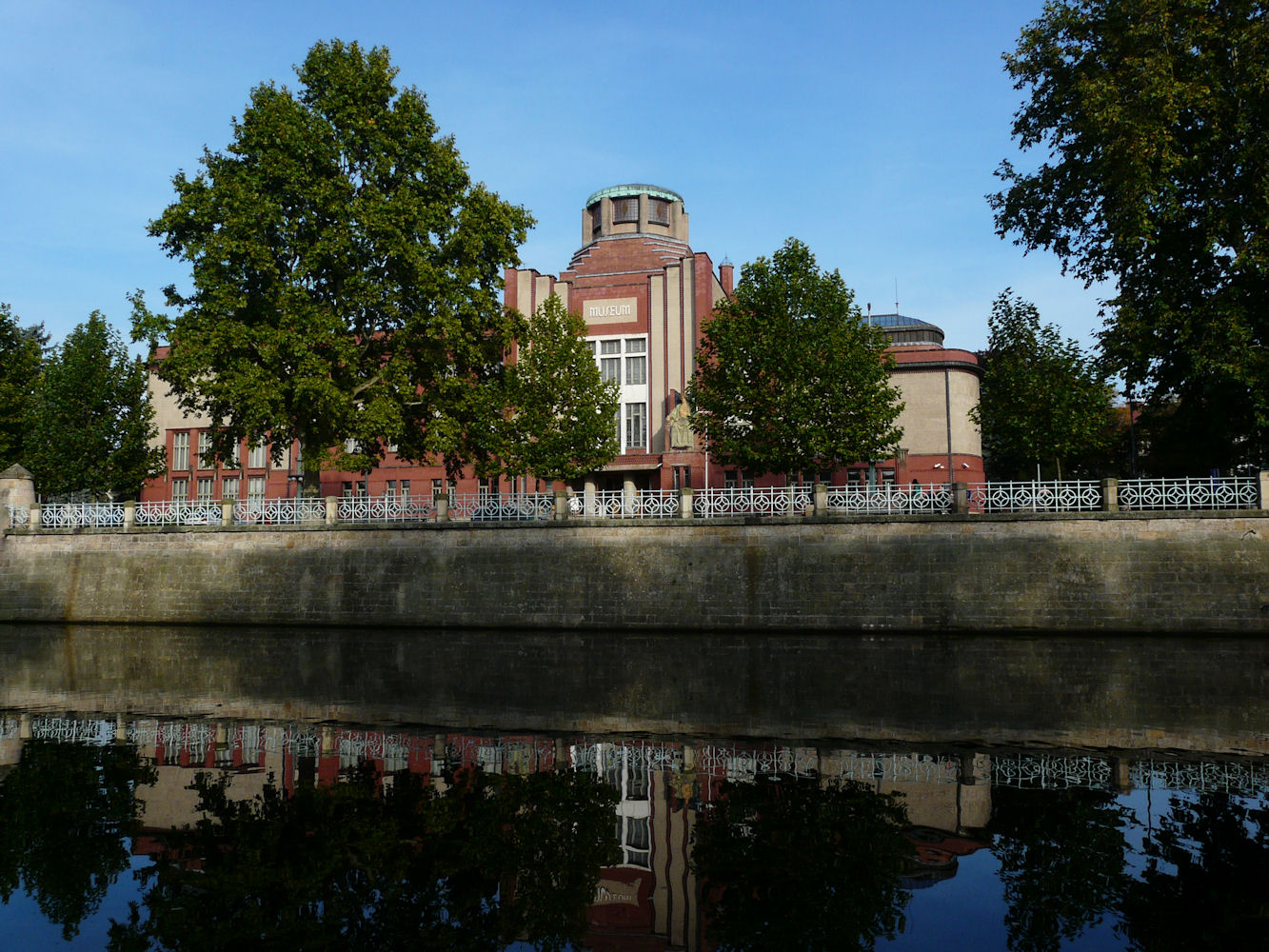Museum of Eastern Bohemia, Hradec Králové
In the late 1890s. the young artists of the Viennese secession sent shockwaves through Europe with their radical new approach to art and architecture. While not completely throwing out the neoclassical rulebook, their boldly geometric designs elevated decorative features to a new prominence, and caused the world to examine afresh the relationship between materials, space and aesthetics.
When the Moravian-born architect Jan Kotěra returned from Vienna to Prague, he introduced his students and the Czech population at large to his own breakaway ideas. A passionate modernist, Kotěra’s style embodied simplicity and strength; his designs anticipated work which Josef Gočár and Otakar Novotný would bring to fulfilment in the next generation.
Considered by many to be the outstanding achievement of Kotěra’s career, the riverside museum in Hradec Králové — 70 miles east of Prague — was begun in 1906 and completed in 1913. Its Luxor-like side-entrance is flanked by massy allegories of History and Industry (the work of Stanislav Sucharda, added in 1911) which sternly challenge the visitor to contemplate his or her relationship with the grandeur of the past.
At the same time, the right-hand figure bears in its outstretched hand a manikin representing the city divesting itself of its old clothes and looking forward to the bright future of the coming century. And that is what is startling about the building too: take away these art nouveau elements and it stands as a remarkable prediction of the art deco style still a decade or more away.










